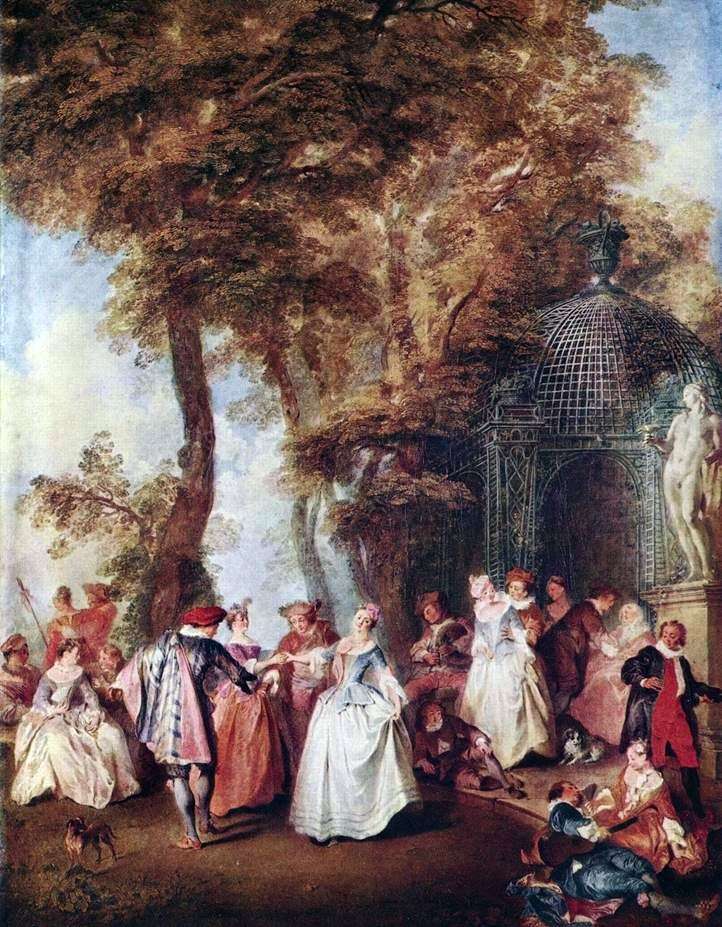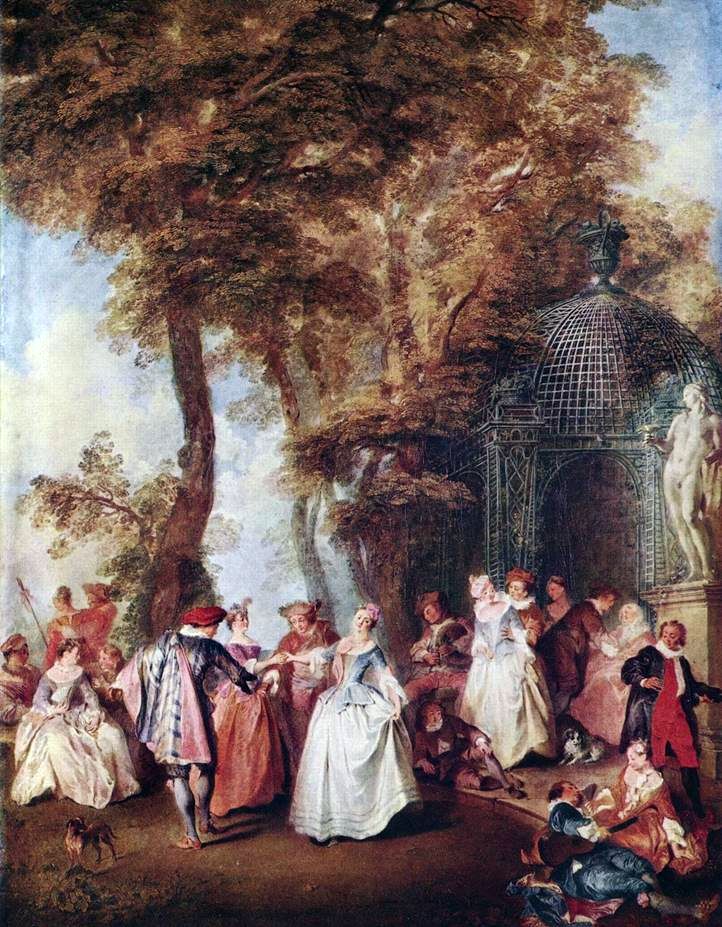
Painting by the French artist Nicolas Lancre “Menuet”. The size of the painting is 129 x 95 cm, oil on canvas. The Minuet is an ancient graceful dance, so named because of its small pas.
The musical notation is written in a two-leg stock, in a three-part size. Often at balls, the first minuet is followed by the second, in the same tonality or in the tonality by the fifth below the main one. If the first minuet in major, the second is often written in the minor minor of the same name. The second minuet is called a trio. In the old minuets, the first minuet was written in two voices, and the second – in three voices.
After the second minuet, the first is always repeated. Often a small code is made at the end of the minuet. Although the dancers perform the minuet smoothly and rather slowly, the minuet music should be played moderately soon. The music of the first minuets belongs to Lully. Minuet was a court dance under Louis XIV. From France, the minuet has spread to other countries; in Russia, the minuet appeared in the reign of Peter the Great.
Minuet was written by almost all composers of instrumental music, both old and newest. In particular, the minuet received artistic processing from Haydn, Mozart and Beethoven. Haydn first introduced the minuet into his symphonies. Of the Russian composers, outstanding minuets wrote Glinka and Rubinstein. Currently, the minuet, like a dance, is out of fashion, but composers continue to exploit the form of the minuet in music.
 Minuet – Nicola Lancre
Minuet – Nicola Lancre Menuet – Nicola Lancre
Menuet – Nicola Lancre Outdoors by Nicola Lancre
Outdoors by Nicola Lancre Garden Society by Nicola Lancre
Garden Society by Nicola Lancre Childhood by Nicola Lancre
Childhood by Nicola Lancre Maturity by Nicola Lancre
Maturity by Nicola Lancre Bathing ladies by Nicola Lancre
Bathing ladies by Nicola Lancre Concert in the lap of nature by Nicola Lancre
Concert in the lap of nature by Nicola Lancre